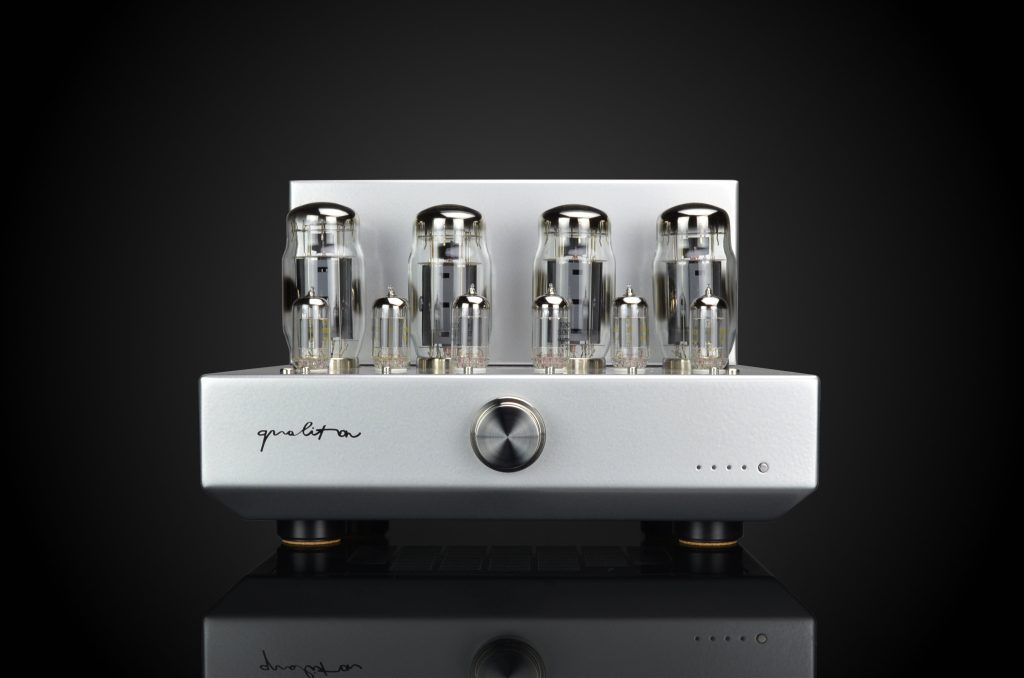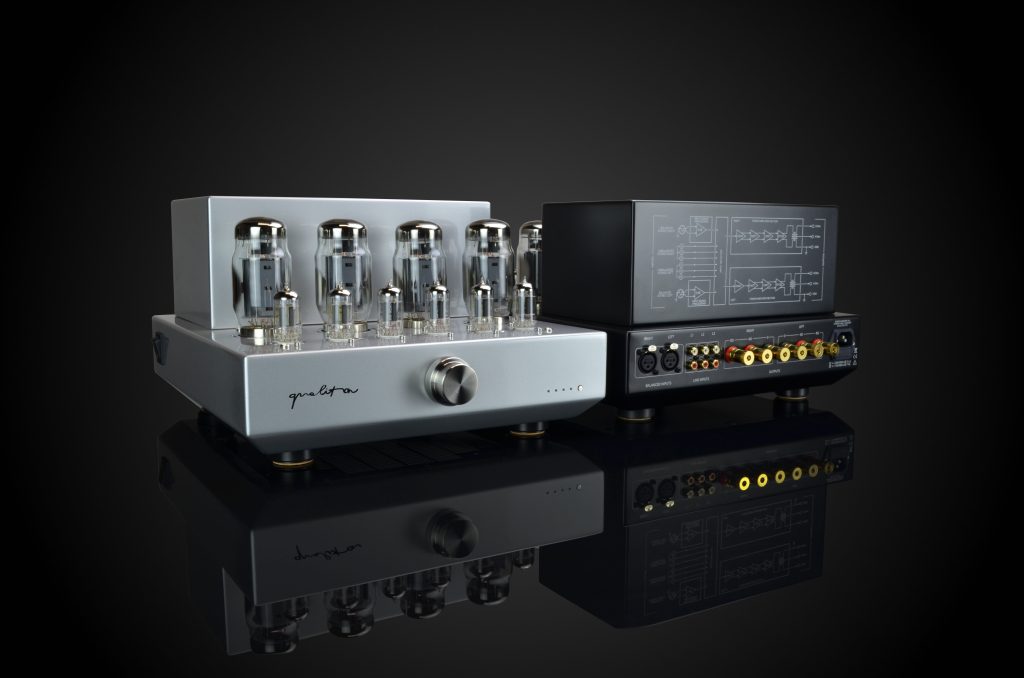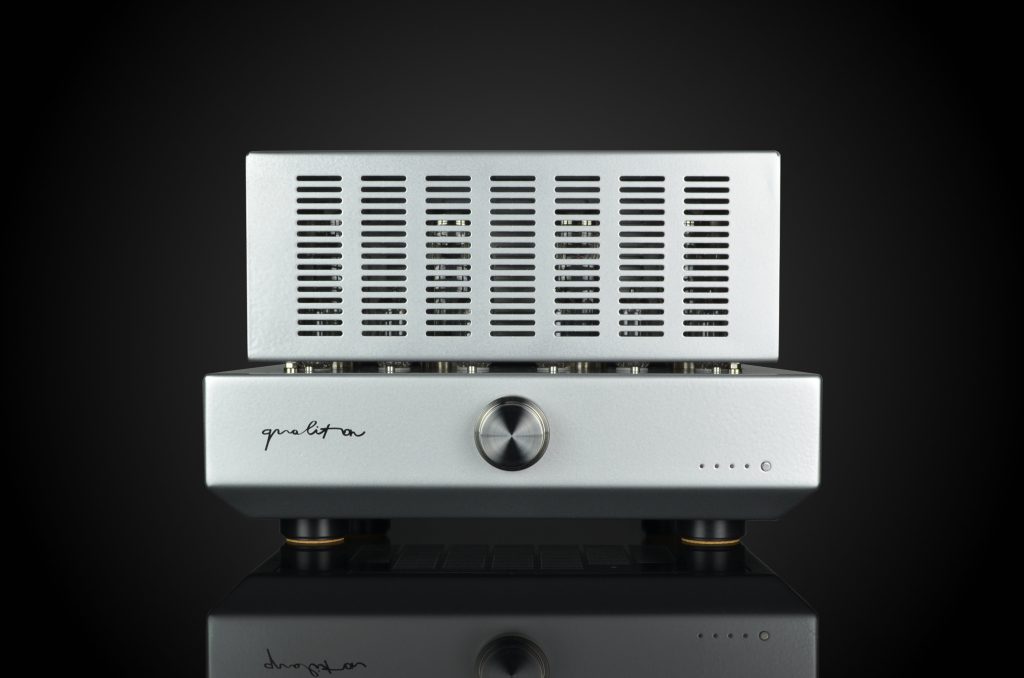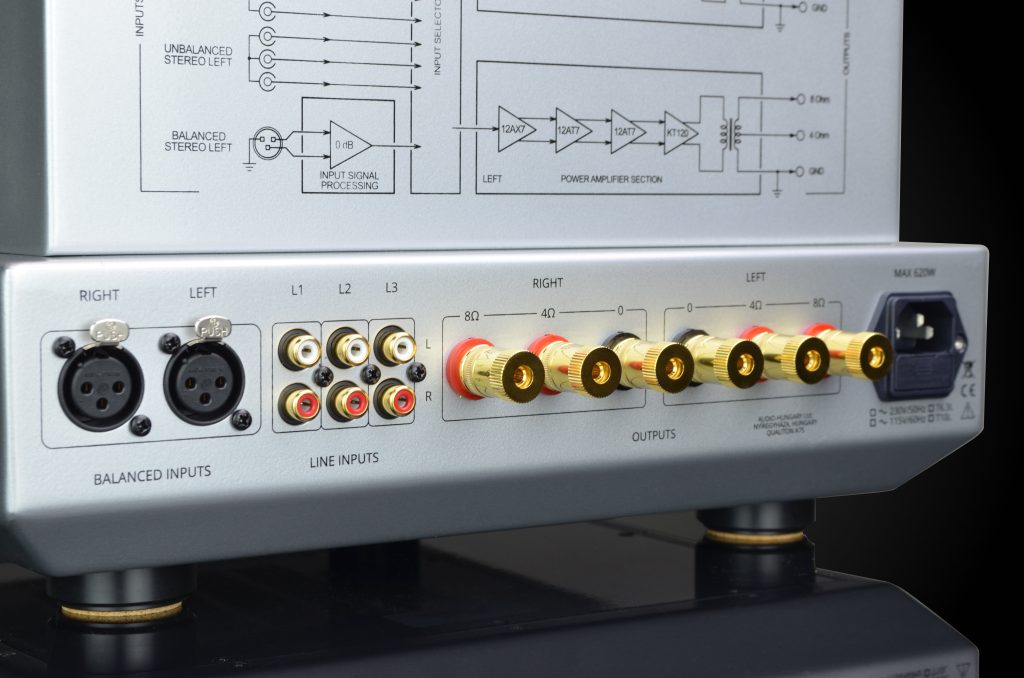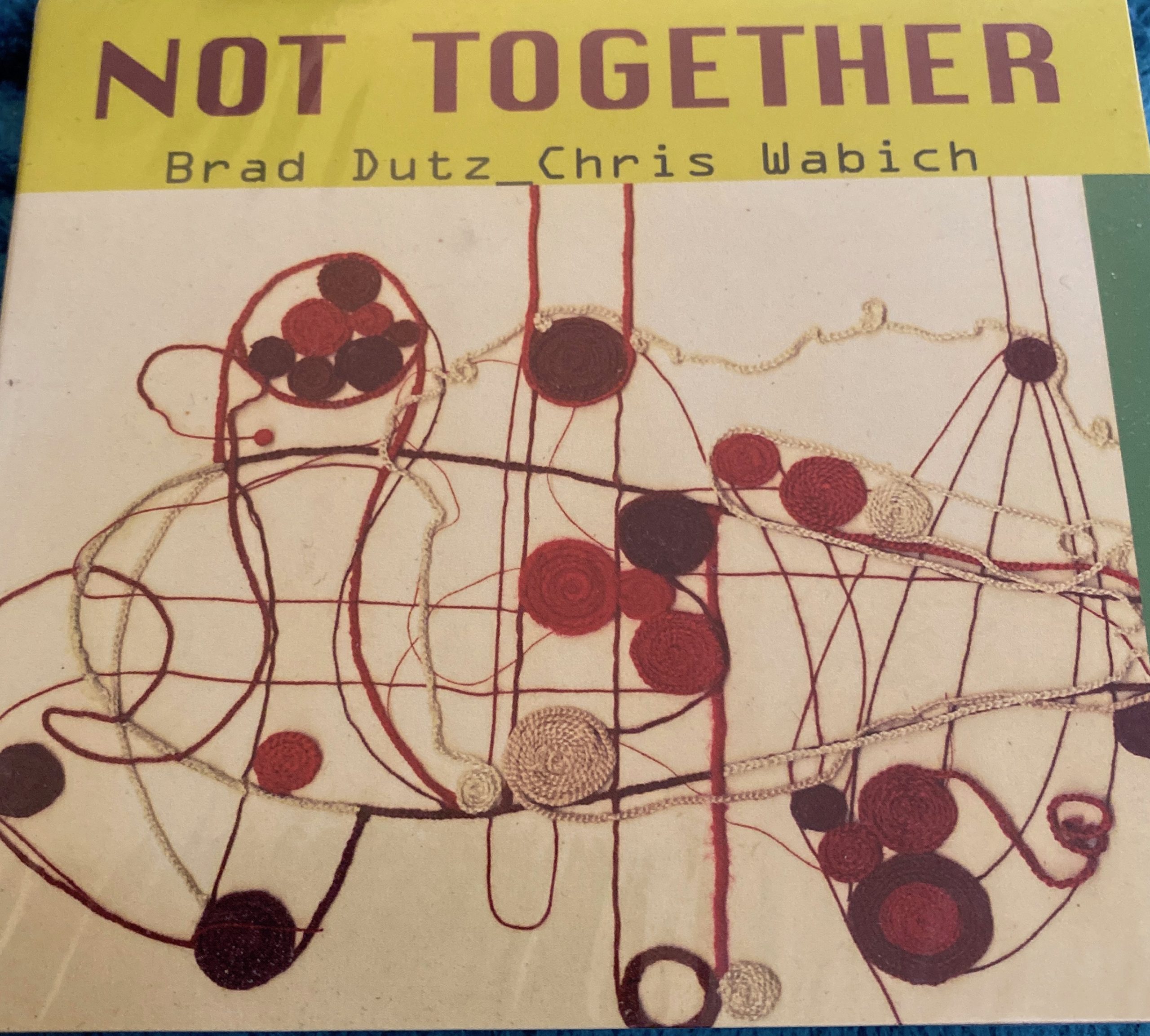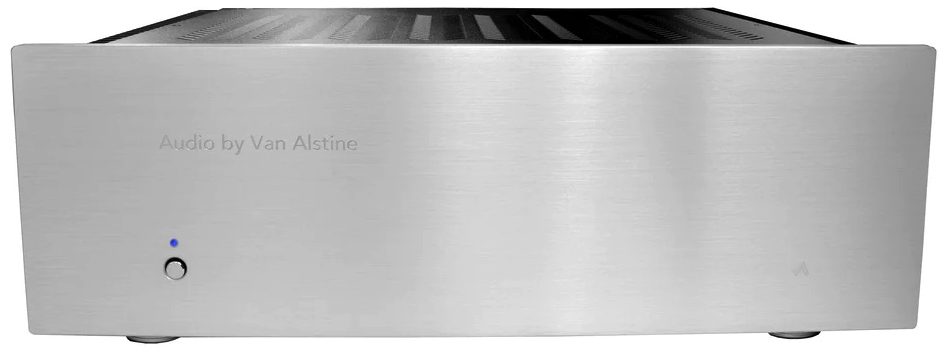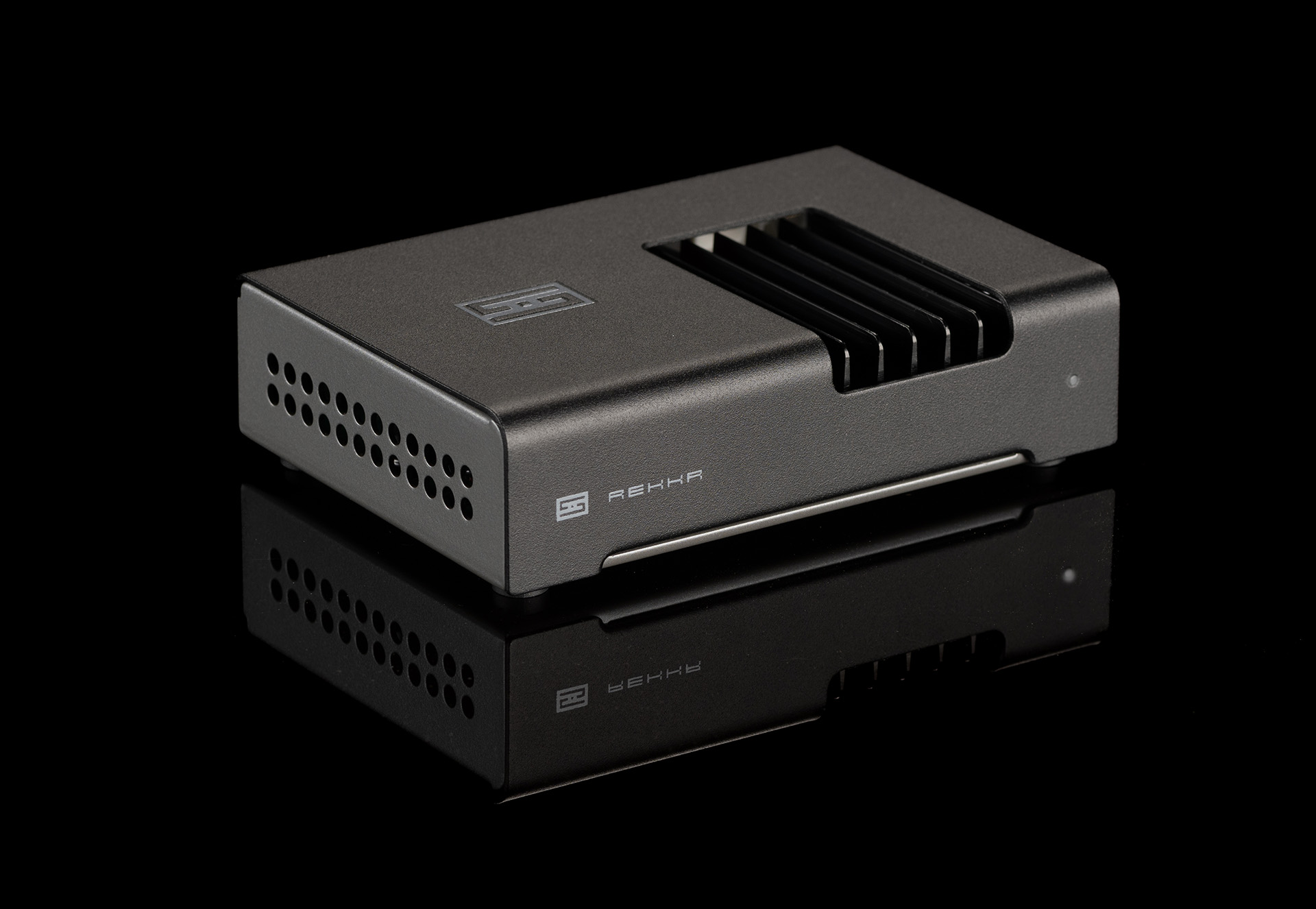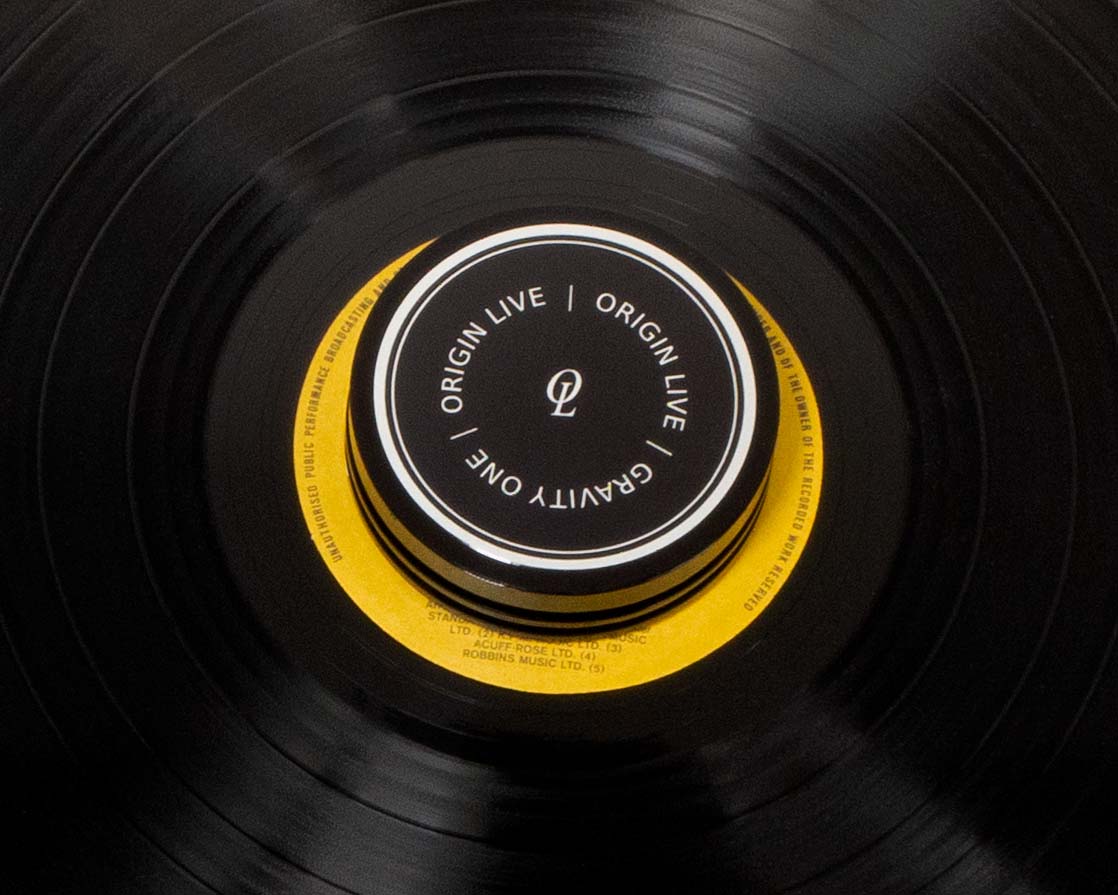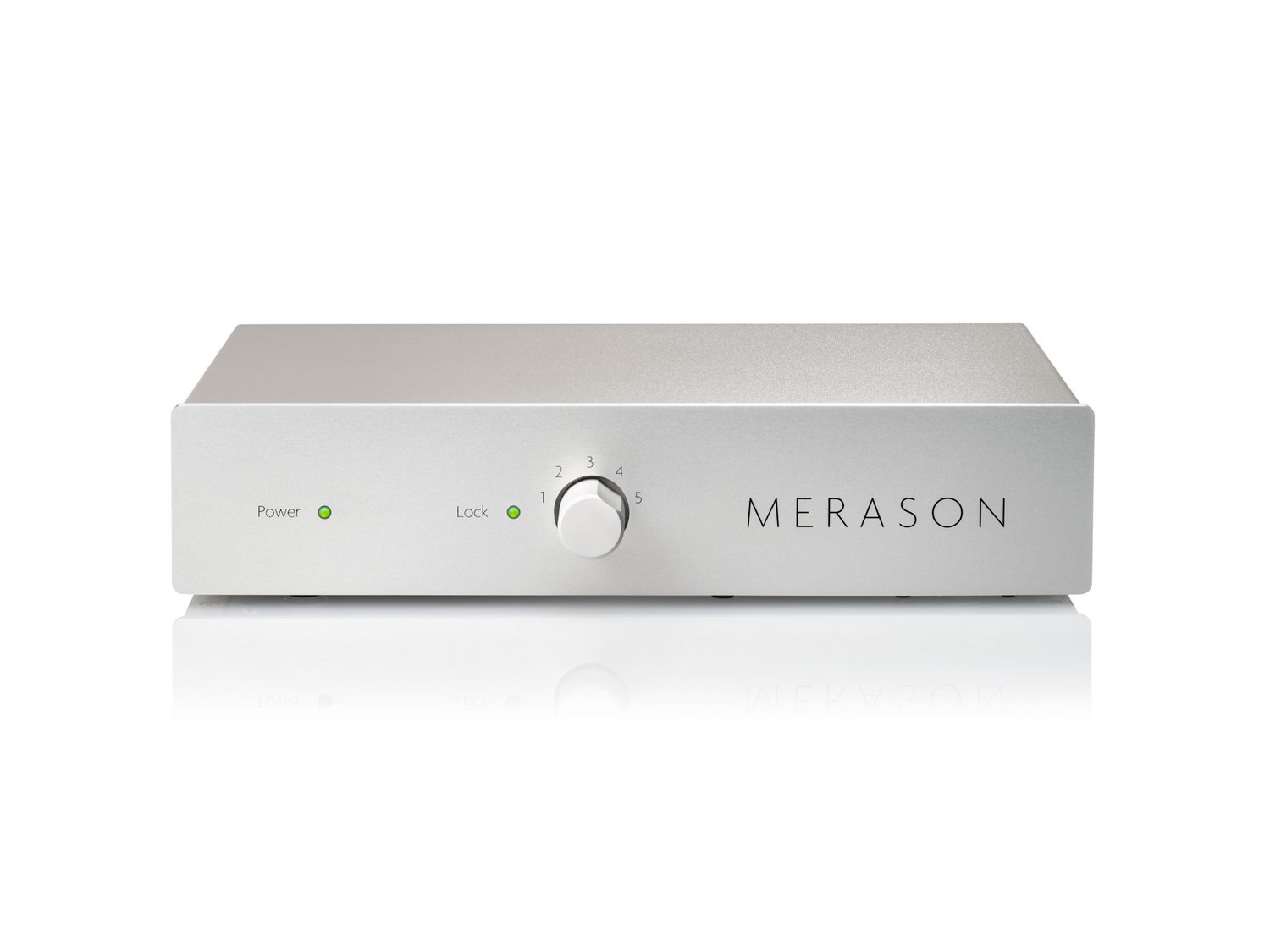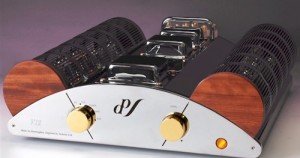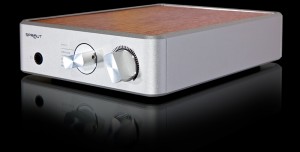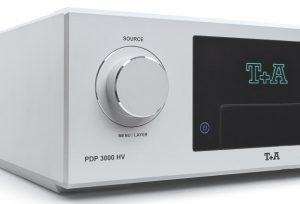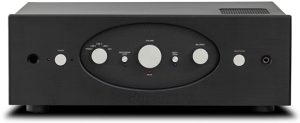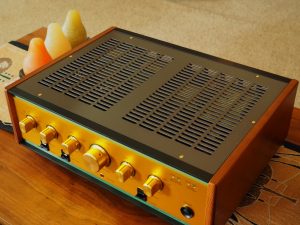When I receive a review component, I start with no tweaks and plunk it beside the component it is replacing. Trying for a tabula rasa, I just plug it in and listen like a cello string, what resonates, what does the component bring, what insight does it provide? Does it excite me or am I bored? Sometimes impressions are equipment related and sometimes they're about obvious musical qualities.
Equipment related impressions might include edginess of treble, how tight the bass is, or how specific the imaging. These are impressions I ascribe to the equipment's sound rather than the sound of music; I don't think about those things when I listen to live music.
Musical impressions might raise questions like, are performers just singing notes rather than communicating an emotional story, e.g. (Renee Fleming vs. Victoria de los Angeles on Bachiana Brasilieros No 5). Or, I might be able to hear both the expressiveness of Karen Carpenter as well as the emotionally suppressed era in which she sang. In short, my impressions hover around the musical impression, not its sound. These are things that happen naturally for me while listening to live music.
And, there is a third kind of experience with review gear, like Audio Hungary's Qualiton A75 integrated amplifier provided. I'll share that later on.
What It Is
The Qualiton A75 is a single chassis integrated amplifier from Hungary, it weighs in at 21kg. Its four KT 120s provide 75-watts. For those with a collection of tubes, your KT88s, KT150s, and KT170s are all compatible, though they all produce the same 75-watts, per Audio Hungary. The tubes are auto biased, so your maintenance, if any, will be quite limited. After 5,000 hours, maybe you'll have to replace some tubes. Of course, random tube failure might occur. A quad of KT120s will run about $520, or about $130 each.
The input tubes consist of four 12AT7s and two 12AX7's. Four 12AT7s might run you as little as $20 each, or for four for $80. Depending on what 12AX7s you purchase, that could also be $20 each, but the sky is the limit on 12AX7s—yes, tube rolling revealed worthwhile differences. All of the tube input and output sockets were very solidly seated, so that inserting or removing tubes yielded no sense of the sockets rocking back and forth as they often do.
The complement of tubes can be hidden beneath a well ventilated tube cage. The quality of the paint on the chassis and cage is exemplary, matching the best I've seen in the industry. I received the silver automotive paint iteration, though black with an electrostatic powder coating is also available. The visual execution of the amplifier would be fitting for a piece of art, but for the necessary tangle of cables plugged into it. The silk screening on the back is very good, with a consistent thickness of the writing and an excellent clarity to that same writing. I expect it should easily last for the life of the amplifier.
What It Can Do
The amplifier operates in class A/B with 4 and 8 Ohm speaker taps around back, but runs quite hot. Beefy transformers are all made in house, as are all Audio Hungary amplifiers. My GamuT L5 speakers, with a dip to nearly 3 Ohms at 200Hz, still sounded best running through the 8 Ohm taps. I believe you'll want a reliable fan to keep it cool, if you place it in a closed cabinet. I kept the Qualiton A75 on the floor or on an amp stand for my usage and had no issues. There are four inputs, three single ended and one balanced. All seemed equally quiet. There is no pass through function for home theater or for the rare among you with a tape deck. There is no preamp out or preamp in, so this will be a stand alone item.
Input selection is accessible via the remote or a single tiny toggling input button on the front that is easy to locate because tiny LEDs shine a light on the buttons associated with the source. Despite the buttons small size, and my older eyes, I had no trouble identifying what input had been selected. Small but bright LEDs, I believe, made selection and identification easy.
I loved the rectangular remote. It's simple and has only a few functions, but its size and weight was exactly right for me. Really, exactly right! With it you'll be able to toggle through sources, volume up and down as well as mute what's playing. The size was such that I never lost it, felt weighed down by it, or worried about its capacity to withstand less than careful usage. The initial thrill of a small remote, think Apple TV, has given way to curses as I hunt for them in the cracks of cushions, on coffee table or wherever I've mislaid it. Bravo.
Some History
And now, a little history. Audio Hungary, like Ortofon in Denmark, traces its origins, in part, to the (radio and) film industry, though the Hungarian company started little later in time. Around 1940 their antecedent started under the name "Rafilm National Radio-and Film technical Company," and was engaged in a "wide profile" of products. Cutting out most of the twists and turns of the company, including various name changes through eighty years, it has accumulated a breadth and depth of knowledge in sound and voice recording and reproduction, perhaps culminating in producing sound for the Sochi Olympics. Entrance into consumer audio occurred in 2015 with their APX200 amplifier.
The attraction of an integrated amplifier is quite compelling to me. This chassis doesn't dominate my listening room and right now I like the visual of fewer boxes, power cords, and interconnects. Having a multitude of boxes in service of really good sound, that was fine, but I'm now less inclined to have my listening room look like a show room.
The Qualiton A75 provides almost, but not quite as much power and functionality as my reference Pass Labs separates. They both sound very good, though in different ways. The Pass AX30.8 and XP12 separates cost, about $13,200 ($7100 + $6100). Audio Hungary's A75 retails for $9200, and you save the cost of one power cord, one set of interconnects with less real estate eaten up. One could replace all of the tubes in the A75 six times ($640 for all of the tubes) for the $4000 difference in price between the Pass combination.
First Impressions - Visual and Tactile
Wow! From the land of the marauding Magyars (Hungary, to some of you), we see neither slipshod workmanship nor horseshoes cobbled onto a hoof, but an elegantly built amplifier that looks like a scientific instrument birthed whole for a beauty contest. Visually, the Qualiton A75 evinces precision and thought. All cables and cords are around back so the front of the Qualiton A75 is elegant and perhaps a statement, much as your turntable might be. This initial impression was welcoming.
My first test was... does it work? Are both channels operating? Is there a hum? Everything was operational. I started with vinyl, though I no longer recall what LP I put on first, nor most of the following LPs, but after an hour or so, my initial impression was mostly positive. Surprisingly, the Qualiton A75 made my system sound like it had greater clarity and precision than the XA30.8 and XP12. My experience has been that normally the scales of precision tilt toward solid state gear. Currently, clarity and precision seem to be having their day in the land of audiophiles where recordings are "realer" than a live event is. There's just more clarity and precision than in any of the listening seats I've been in. That, however, is not what I'm necessarily after.
My musical selections aren't about getting the most precise imaging, the deepest bass or highest treble, or even the "best recorded" music. Many audiophiles pine for Jazz at the Pawnshop for that recording's wonderful realism, but I find that LP uninspiring—my sister has it and hasn't listened to it since I gave it to her twenty years ago. I want to enjoy, even be thrilled by the music that inspired me to have a nice stereo. I'd rather be disappointed by the recording quality of my music than to hear super well recorded musical blather masquerading as music.
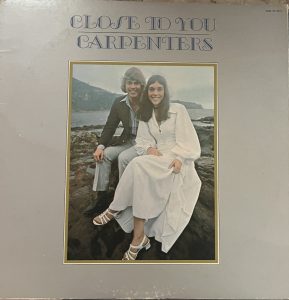
So I selected Close to You, Richard and Karen Carpenter's first LP—recently inherited from my parents. This is not an audiophile recording—I found it without so much as an inner sleeve. I haven't heard it in decades, and yes, it's a dated sound, but it's an LP about music, not sound or imagery. Essentially all of the sounds are made naturally rather than electronically, making it a good starting place for me. Would the Qualiton A75 bring so much clarity and precision that I didn't recognize or enjoy this LP?
This album was a bullseye! Karen Carpenter's voice was rich, round and beautiful sounding like it came from a real human body between my speakers. The sound was lovely and realistic. The quality of the experience and recording was, frankly, completely unexpected. Surprisingly this recording was rhythmic in places with the Audio Hungary, which I hadn't detected with the Pass gear. Hmm, maybe it wasn't the wolves of precision and clarity at the door.
Although I labeled my initial impression of the Hungarian amplifier as a "precise and clear" maybe nimble would have been better, at least in comparison to the XA30.8/XP 12 combination. When I think of nimble, I go straight to Rega turntables. They're fast, "pacey" and rhythmic, and evoke the idea of nimble, i.e. PRaT. When I bought my first high end turntable, my "final" two choices were a new Rega P3 or an older SOTA Sapphire Mk 1. The Rega's bass was less rich and full and definitely not as extended as the SOTA I purchased. Unquestionably, the Rega is more nimble than the SOTA, but also a bit lighter in weight than the latter leading to an experience of PRaT. Turning things around, that SOTA was not the PRaT icon the Rega was, either, perhaps comparatively leaden. Before you interpret that I just said the Qualiton A75 does not have deep bass, hold your horses and let me finish the thought later in.

Switching from analog to digital, I cued up "Üsküdar'a Gider Iken" ("On the Way to Uskudar" in Türkiye-ish) and "Omide Zendegani" (Persian for "Life's Hope") both from Pink Martini's Get Happy. With a click of my mouse I'm across the Atlantic happily immersed in cultures and sensibilities that are both foreign and welcome diversions. Collectively about six minutes of time travel without any thoughts about bass, treble, or imaging. I'm just moving in my seat hearing appropriate bass and enjoying a mini-vacation from southern California, the United States, and "western culture."
Through my reference system, the sound of these tracks is slightly warmer and richer, perhaps even having a grainier sound, though I heard it as velvety. The Qualiton A75's presentation of tone and timbre, was just a hair less warm, though differently rich. In place of the Pass pair's velvety presentation, the Hungarian's sound was just a bit more "continuous" sounding with a very slightly, lighter more liquid touch. Oddly, I've never heard the Pass gear as grainy, and still don't, but even so the Audio Hungary was still just a bit more liquid. Both, let's be clear, were delightful presentations. And, did I miss bass on these tracks? No, there was an excellent match of musical demand and electronic performance, nothing was left behind. And the sound was still weighty—I experienced no loss of bass weight on the music I listen to for pleasure.
An Aside
Allow me a brief aside. Based not on a side by side comparison, but based on my emotional impressions the sound of the Qualiton A75 was between the almost and not quite, vividness of Audio by Van Alstine's M750 mono blocks. My recollection is that the M750s had an even greater sense of clarity and precision than the Qualiton A75, which in turn generally exceeded the Pass pair. The Qualiton A75 was the most liquid sounding to me, with a bit less of the velvety quality I recall of the Pass pair, but more texture than the Qualiton A75s.
Both the Pass and M750s eclipsed the bass response of the Hungarian amp, with the latter having not the most bass depth, but the greatest sense of dynamic contrasts. The M750s left me with a sense that they'd eclipsed the macro-dynamics of nearly every amplifier I've heard. While these amplifiers take turns with "supremacy," keep in mind all of these are really good choices in my system.
And, then it came time to experiment with tubes, to the extent I could. I have no KT88s, KT120s, or KT150s, and no 12AT7s, but I do have a modest collection of 12AX7s. I tried out some NOS Brimar 12AX7s in the input stage, as well as some Mullard 4004CVs with Pink Martini's Get Happy. My Brimars were more muddled and diffuse sounding than the stock tubes; what it altered wasn't what I wanted. Inserting the Mullards, frequency extension was not affected, most of the same precision and clarity remained, but I experienced an infusion of timbral richness, including a sense of weightiness in the bottom end. Now, the Audio Hungary was staring down at the Pass gear as just a little less inky and velvety sounding. Although I liked that change and spent time with the Mullards in the A75, I had become attuned to Audio Hungary's sound, and returned to the stock tubes for the rest of my listening time. Had I cottoned to clear and precise? Hmm.
Often, as a reviewer, I'll pull out music that evokes an experience of beauty. That's sort of like cheating or tilting the scales. Beautiful music translate well live as well as through recorded music. I've found virtually any type of music, even varieties I don't like, sound really engaging in person/live. Would "unlovely music" be as engaging as beautiful music reproduced by the Hungarian beauty? So I pulled out "Ella Guru" from Captain Beefheart's Trout Mask Replica. No one will call this "beautiful music" nor will they say it's well recorded. Would the Qualiton A75 prettify Don Van Vliet's vocals and ruin the experience? Would the unexceptional recording make this an unexceptional listening experience?
No, Beefheart's burlap sack vocals came through with great clarity, as well as with a rich and captivating rendition of his vocal timbre. About 25 seconds in on this track, I got angry because my son was talking with a friend outside my door. Well, turns out it was neither my son nor his friend, I heard background voices in the recording I'd not heard before. The ability to hear that sort of detail through Van Vliet's raspy vocals was a pretty good indicator of a certain transparency. I found myself halfway through the album before I remembered I was only "testing" how engaging poor recordings sounded.
I know I resumed test recordings through my system, but became so immersed, I forgot to take notes. Ultimately, I found myself again hunting through my collection for musical pleasure. I spent a lot more time focused on pleasure than testing. Pleasure here, wasn't just tipped to beautiful sounding music, but going back to "new wave" style music I listened to in college. This time, through the Squeeze App on my newly acquired Antipodes CX streamer/renderer. I alighted on "SoCal Sound," 88.5FM Los Angeles and the following songs sucked me in:
- Dora Jar, "Bumblebee"
- Trapdoor Social (Featuring Top Shelf Brass Band), "Feeling Good"
- Soul Coughing, "Super Bon Bon"
- Jon Batiste, "Calling Your Name"
I loved being called back to a time when I was more adventurous about the music I listened to. That had me hunt down a handful of music I ripped decades ago that were one hit wonders, at least to me:
- Cordero, "Vamos Nenas" (2000s?)
- Cheb Khaled, "Liah Liah" (1990s?)
- Imperial Teens, "Sugar"
- Pink, "Let's Get This Party Started." (Okay, not a one hit wonder)
None of these eight recordings are audiophile darlings: they're not sophisticated compositions, the music is simple and the artistry... not necessarily a high level. They're just songs I am engaged by at a subconscious level that "fancy" music does not. The time spent with those recordings was like flying through time, free of gravity and concerns to my college days. Not once did I think about imaging, bass or treble—too much of my own body movement was going on to notice that and too much satisfaction. This is where the Qualiton A75 provided an insight.
Oh No! An Insight
For the music I really love, rather than the music I'm interested in and hoping to love, the Qualiton A75 delivered as much as the very fine but more expensive Pass Labs gear. It did it with a smaller footprint and with a charming way. I found myself impelled to cull the extra audio stuff I have around for things I hope to love and or use but frankly... don't. At the close of the review period, I unloaded a boatload of cables and tweaks and other such things. They work in the right system configuration and many I haven't used in years. And, I found the Pass gear does much of what made the Qualiton A75 magic, but it took the Hungarian visitor for me to notice.
I was also inspired to disgorge more non-audio stuff, like furniture, shoes, and clothing I have trouble giving away. Clearing the house and my mind serves a wonderful purpose. As an audiophile with so many great openings and possibilities, it's like keeping forks in the road toward "audio progress" when those forks don't necessarily lead to progress so much as further inquiries. Further inquiries are fine if you don't know what you're after, but unhelpful distractions when you realize you do.
The further upshot of time with Audio Hungary's Qualiton A75 was making plain to me, again, that music is about enjoyment not extraction of every iota of sound. More information is more information it is not necessarily more joy. As an audiophile, my musical interests have blossomed and include far more genres of music than when I started. I'm not going into a hermit state. I've poked into a lot of corners of music that I was never interested in. Some proved just interesting and some really enjoyable. So it goes.
The Qualiton A75 is a compelling offer to buy, simplify, and just enjoy. Have great sound without having to give up so much real estate while retaining some visual beauty. It's an opportunity to bask in the joy of an evolved system. Instead of studying reviews of amplifiers to determine what your next audio purchase should be. Maybe what's next is to continue exploring new music or it's immersing yourself more deeply into your record collection or taking friends to your desert island system and basking in the full glory of what you've constructed. Audio Hungary's Qualiton A75 could be that. Highly recommended.
Qualiton A75 Integrated Amplifier
Retail: $9250 in silver or $8250 in black
US Importer
Well Pleased AV
1934 Old Gallows Road, Suite 350
Tysons Corner, VA 22182
703.750.5461
Audio Hungary
All images courtesy of Well Pleased AV and the author




